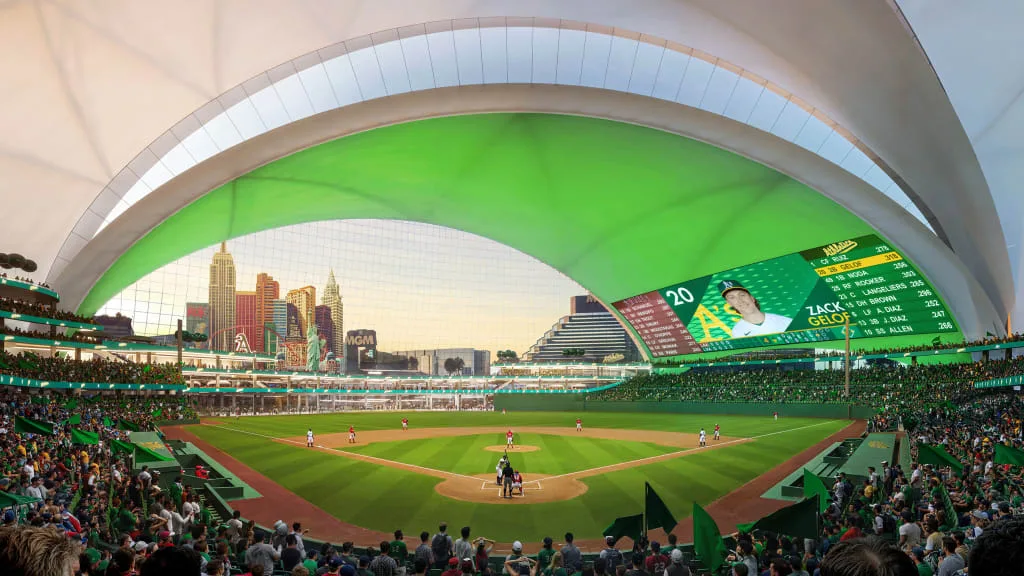Major League Baseball is set to expand from 30 to 32 teams, but there is still uncertainty about the exact timeline and when the two new teams will begin play. Commissioner Rob Manfred recently stated that the new franchises likely won’t be active during his current term, which ends in January 2029. However, Manfred expressed a desire for the expansion process to begin soon and for cities to be selected within this decade. As a result, it is expected that the cities chosen for the new teams will be known before the 2030s.
The cities most likely to receive expansion teams are Charlotte, Las Vegas, Montreal, Nashville, Portland, Sacramento, Salt Lake City, and San Antonio. These cities are under consideration due to their existing sports infrastructure, including minor league teams, as well as the presence of advocacy groups and ownership interests working to bring an MLB franchise to their area. Five of the cities have Triple-A minor league teams, while San Antonio has a Double-A team, and Portland has a High-A team. Montreal, which previously hosted the Expos, is also a top contender as efforts to return MLB to the city continue.
In addition to the location of teams, the cities will need to demonstrate the financial viability to cover the substantial expansion fees, which are likely to be in the hundreds of millions of dollars or higher. Furthermore, these cities will need to commit public funds to construct new ballparks, as well as provide tax incentives. Ownership groups in each city will need to work with local governments to ensure financial and logistical support for the teams to succeed and thrive.

Several factors are being considered when evaluating the viability of these cities, including metro-area population, media market rank, per-capita GDP, the number of existing major professional sports franchises, and proximity to current MLB teams. A larger metro population is beneficial because it increases the potential for higher attendance and more lucrative media deals. Additionally, cities with large populations are less likely to rely on revenue sharing from other teams, which is a key concern for MLB owners. However, there is a preference to avoid placing teams in markets that are already overcrowded, like the New York City area, which already has two MLB teams.
In terms of metro-area population, Montreal has the largest at 4.38 million, followed by Charlotte (2.76 million), San Antonio (2.66 million), and Portland (2.51 million). Other cities like Sacramento, Las Vegas, Nashville, and Salt Lake City have smaller populations, with Salt Lake City being the smallest at 1.27 million. San Antonio benefits from being close to Austin, which has a population of 2.42 million. A team in San Antonio could draw fans from both cities, making the market larger than its population suggests.
For media market rank, which impacts broadcasting potential and access to national sponsorships, cities like Sacramento, Charlotte, and Portland rank relatively high in the 20s among U.S. markets. Montreal, not being part of a U.S. media market, would likely fall into a similar category. San Antonio, ranked 31st, and Las Vegas, ranked 40th, have lower media market ranks, which could affect their financial appeal. MLB will need to weigh the media market strength of these cities, especially as sports broadcasting continues to evolve with streaming services and national contracts.

Per-capita GDP, which measures the average economic output per person, is another key factor. Las Vegas and Charlotte top the list with GDPs over $60,000, indicating a wealthier population capable of supporting a major league franchise. Other cities like Sacramento, Nashville, and San Antonio also have solid per-capita GDPs, while Salt Lake City and Montreal have somewhat lower figures. A higher GDP suggests that these cities have residents with discretionary income who can afford tickets, merchandise, and luxury services offered by MLB teams.
The number of existing major sports franchises in each city is also an important consideration. Charlotte, Las Vegas, Nashville, and Portland already have teams in the NFL, NBA, or NHL. While this demonstrates that the cities can support major professional teams, MLB must consider whether the addition of a new team would stretch the market too thin. Cities with only one major league team, such as San Antonio and Salt Lake City, may have more room for growth. Additionally, proximity to existing MLB teams is a factor. For example, Sacramento is only 88 miles from the San Francisco Giants, while Salt Lake City is 520 miles from Denver, giving these cities different levels of competition from nearby teams.
Ultimately, the decision on which cities will receive MLB expansion teams will depend on a variety of factors, including financial viability, market size, and local support for the team. Each city has its strengths and weaknesses, and MLB will have to balance all these considerations when making the final choice. While some cities appear to have stronger cases, the process is still in its early stages, and much will depend on how cities engage with MLB to secure a franchise.
